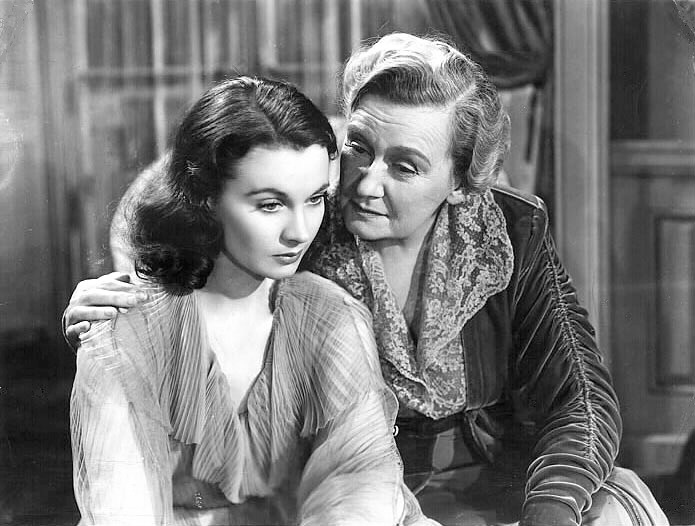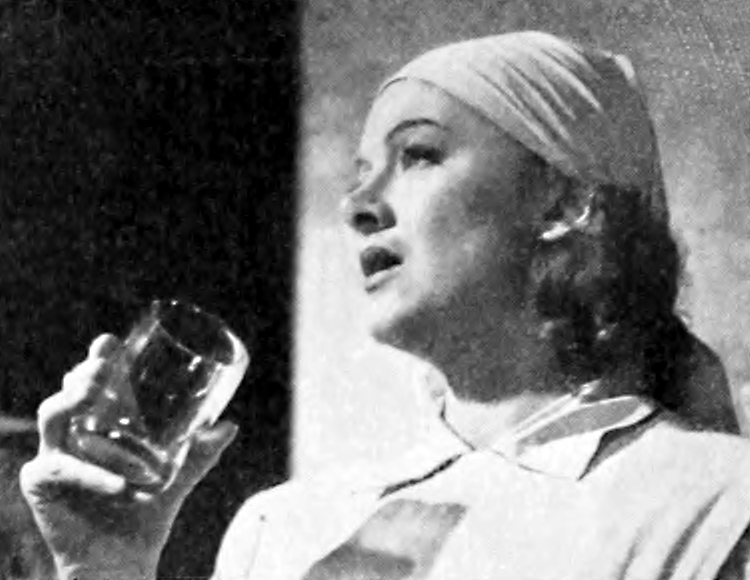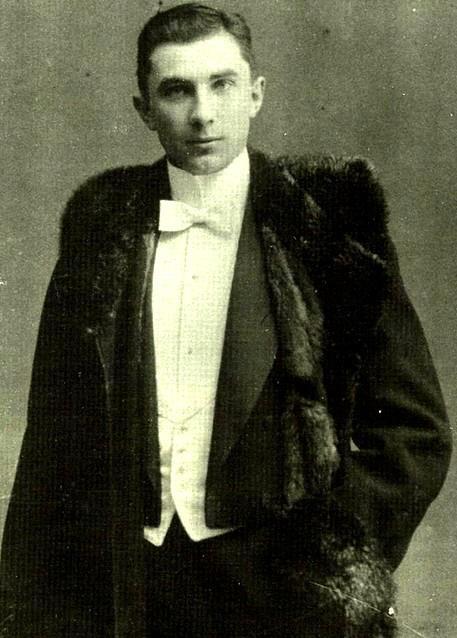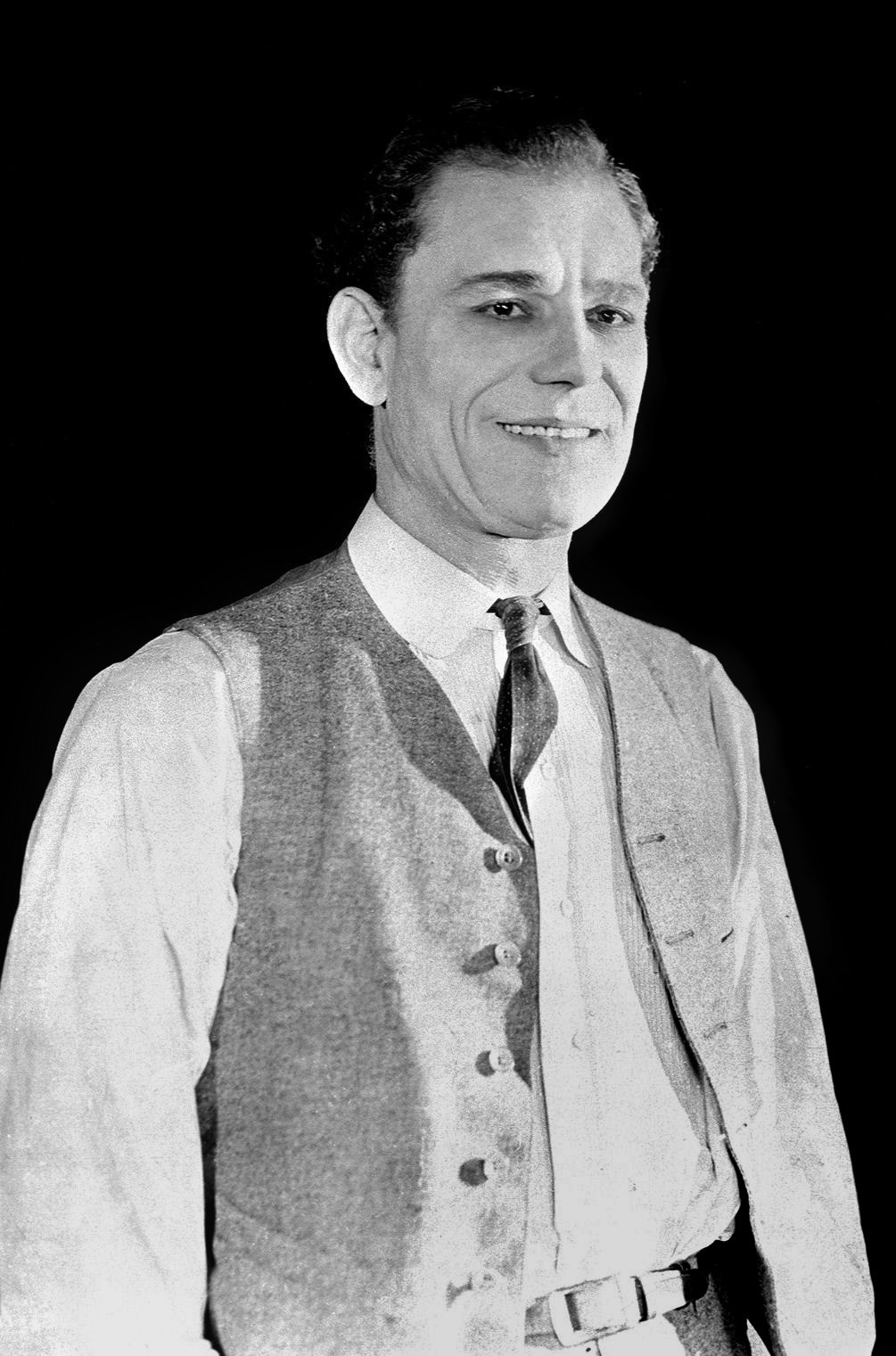|
Maria Ouspenskaya
Maria Alekseyevna Ouspenskaya (russian: Мария Алексеевна Успенская; 29 July 1876 – 3 December 1949) was a Russian actress and acting teacher.Nissen, Axel. 2006. ''Actresses of a Certain Character: Forty Familiar Hollywood Faces from the Thirties to the Fifties.'' Illustrated ed. Jefferson, NC: McFarland & Co.; , p. 141. She achieved success as a stage actress as a young woman in Russia, and as an elderly woman in Hollywood films.Obituary for Maria Ouspenskaya, ''Variety'', 7 December 1949; page 63. Life and career Ouspenskaya was born in Tula, Tsarist Russia. She studied singing in Warsaw and acting in Moscow. She was a founding member of the First Studio, a theatre studio of the Moscow Art Theatre. There she was trained by Konstantin Stanislavsky and his assistant Leopold Sulerzhitsky. The Moscow Art Theatre traveled widely throughout Europe, and when it arrived in New York City in 1922, Ouspenskaya decided to stay there. She performed regularly on Bro ... [...More Info...] [...Related Items...] OR: [Wikipedia] [Google] [Baidu] |
Tula, Russia
Tula ( rus, Тула, p=ˈtulə) is the largest city and the administrative center of Tula Oblast in Russia, located south of Moscow. Tula is located in the northern Central Russian Upland on the banks of the Upa River, a tributary of the Oka. At the 2010 census, Tula had a population of 501,169, an increase from 481,216 in 2002, making it the 32nd largest city in Russia by population. A primarily industrial city, Tula was a fortress at the border of the Principality of Ryazan. The city was seized by Ivan Bolotnikov, and withstood a four-month siege by the Tsar's army. Historically, Tula was a major centre for the manufacture of armaments. The Demidov family built the first armament factory in Russia in the city, in what would become the Tula Arms Plant, which still operates to this day. Tula is home to the Klokovo air base, Tula State University, Tula Kremlin, The Tula State Museum of Weapons and Kazanskaya embankment of the Upa River (). Tula has a historical association ... [...More Info...] [...Related Items...] OR: [Wikipedia] [Google] [Baidu] |
Dodsworth (film)
''Dodsworth'' is a 1936 American drama film directed by William Wyler, and starring Walter Huston, Ruth Chatterton, Paul Lukas, Mary Astor and David Niven. Sidney Howard based the screenplay on his 1934 stage adaptation of the 1929 novel of the same name by Sinclair Lewis. Huston reprised his stage role. The center of the film is a study of a marriage in crisis. Recently retired auto magnate Samuel Dodsworth and his narcissistic wife Fran, while on a grand European tour, discover that they want very different things out of life, straining their marriage. The film was critically praised and nominated for seven Academy Awards, including Best Picture, Best Actor for Huston, and Best Director for Wyler (the first of his record twelve nominations in that category), and won for Best Art Direction. In 1990, ''Dodsworth'' was included in the annual selection of 25 motion pictures added to the National Film Registry of the Library of Congress. being deemed "culturally, historically, o ... [...More Info...] [...Related Items...] OR: [Wikipedia] [Google] [Baidu] |
Beyond Tomorrow (film)
''Beyond Tomorrow'' (also known as ''And So Goodbye'' and ''Beyond Christmas'') is a 1940 American fantasy film directed by A. Edward Sutherland and produced by noted cinematographer Lee Garmes; Garmes was one of a handful of cinematographers who became film producers. Structured as a B film, the production did not engage any stars who would receive billing above the title, relying instead on a quartet of veteran character actors, Charles Winninger, Maria Ouspenskaya, C. Aubrey Smith and Harry Carey, second-tier young leads Richard Carlson and Jean Parker as well as "other woman" Helen Vinson, a minor lead/second lead actress during the early- and mid-1930s, here approaching the end of her career. All seven actors received a "Featuring" billing after the title. The remaining supporting cast included Rod La Rocque, a top leading man of the silent era, now reduced to playing minor supporting roles. Because the events of the plot take place during the Christmas season, it is a ... [...More Info...] [...Related Items...] OR: [Wikipedia] [Google] [Baidu] |
Waterloo Bridge (1940 Film)
''Waterloo Bridge'' is a 1940 American drama film and the remake of the 1931 film also called ''Waterloo Bridge'', adapted from the 1930 play ''Waterloo Bridge''. In an extended flashback narration, it recounts the story of a dancer and an army captain who meet by chance on Waterloo Bridge. The film was made by Metro-Goldwyn-Mayer, directed by Mervyn LeRoy and produced by Sidney Franklin and Mervyn LeRoy. The screenplay is by S. N. Behrman, Hans Rameau and George Froeschel, based on the Broadway drama by Robert E. Sherwood. The music is by Herbert Stothart and cinematography by Joseph Ruttenberg. The film stars Robert Taylor and Vivien Leigh. It was a success at the box office and nominated for two Academy Awards: Best Music for Herbert Stothart and Best Cinematography. It was also considered a personal favorite by both Leigh and Taylor. In 1956, it was remade again as '' Gaby'', which starred Leslie Caron and John Kerr. Plot After Britain's declaration of war in World Wa ... [...More Info...] [...Related Items...] OR: [Wikipedia] [Google] [Baidu] |
The Rains Came
''The Rains Came'' is a 1939 20th Century Fox film based on an American novel by Louis Bromfield (published in June 1937 by Harper & Brothers). The film was directed by Clarence Brown and stars Myrna Loy, Tyrone Power, George Brent, Brenda Joyce, Nigel Bruce, and Maria Ouspenskaya. A remake of the film was released in 1955 under the name ''The Rains of Ranchipur''. Plot The story centers on the redemption of its lead female character, Lady Edwina Esketh. Tom Ransome is an artist who leads a rather dissolute, if socially active life in the fictional town of Ranchipur, India. His routine is shattered with the arrival of his former lover, Lady Edwina Esketh, who has since married the elderly Lord Esketh. Lady Edwina first sets out to seduce, then gradually falls in love with, Major Rama Safti who represents the "new India." Ranchipur is devastated by an earthquake, which causes a flood, which causes a cholera epidemic. Lord Esketh dies and Lady Esketh renounces her hedonistic l ... [...More Info...] [...Related Items...] OR: [Wikipedia] [Google] [Baidu] |
Bela Lugosi
Béla Ferenc Dezső Blaskó (; October 20, 1882 – August 16, 1956), known professionally as Bela Lugosi (; ), was a Hungarian and American actor best remembered for portraying Count Dracula in the 1931 horror classic ''Dracula'', Ygor in ''Son of Frankenstein'' (1939) and his roles in many other horror films from 1931 through 1956. Lugosi began acting on the Hungarian stage in 1902. After playing in 172 different productions in his native Hungary, Lugosi moved on to appearing in Hungarian silent films in 1917. He had to suddenly emigrate to Germany after the failed Hungarian Communist Revolution of 1919 because of his former socialist activities (organizing a stage actors' union), leaving his first wife in the process. He acted in several films in Weimar Germany, before arriving in New Orleans as a seaman on a merchant ship, then making his way north to New York City and Ellis Island. In 1927, he starred as Count Dracula in a Broadway adaptation of Bram Stoker's novel, mo ... [...More Info...] [...Related Items...] OR: [Wikipedia] [Google] [Baidu] |
Lon Chaney Jr
Creighton Tull Chaney (February10, 1906 – July12, 1973), known by his stage name Lon Chaney Jr., was an American actor known for playing Larry Talbot in the film '' The Wolf Man'' (1941) and its various crossovers, Count Alucard (Dracula spelled backward) in '' Son of Dracula'', Frankenstein's monster in ''The Ghost of Frankenstein'' (1942), the Mummy in three pictures, and various other roles in many Universal horror films. He also portrayed Lennie Small in ''Of Mice and Men'' (1939) and supporting parts in dozens of mainstream movies, including '' High Noon'' (1952), and ''The Defiant Ones'' (1958). Originally referred to in films as Creighton Chaney, he was later credited as "Lon Chaney, Jr." in 1935, and after ''Man Made Monster'' (1941), beginning as early as ''The Wolf Man'' later that same year, he was almost always billed under the name of his immensely more famous father, the deceased cinema giant Lon Chaney, at the studio's insistence. Chaney had English, Fr ... [...More Info...] [...Related Items...] OR: [Wikipedia] [Google] [Baidu] |
Frankenstein Meets The Wolf Man
''Frankenstein Meets the Wolf Man'' is a 1943 American horror film directed by Roy William Neill and starring Lon Chaney Jr. as the Wolf Man and Bela Lugosi as Frankenstein's monster. This was the first of a series of later called "monster rallies" combining characters from several film series. This film's script written by Curt Siodmak follows ''The Ghost of Frankenstein'' and '' The Wolf Man''. The film involves Larry Talbot who is brought back to life. Seeking a way to return to his death to escape his werewolf curse, he meets with gypsy Maleva (Maria Ouspenskaya) who advises him that the only way to stay dead is to confer with Dr. Frankenstein. The doctor is long dead but his equipment is in working condition, leading Talbot to seek the help of scientist Dr. Mannering (Patric Knowles) and Frankenstein descendant Baroness Elsa Frankenstein (Ilona Massey). Talbot then attempts to have his life sucked from his body and transferred into Frankenstein's monster (Bela Lugosi). Develo ... [...More Info...] [...Related Items...] OR: [Wikipedia] [Google] [Baidu] |
The Wolf Man (1941 Film)
''The Wolf Man'' is a 1941 American horror film written by Curt Siodmak and produced and directed by George Waggner. The film stars Lon Chaney Jr. in the title role. Claude Rains, Warren William, Ralph Bellamy, Patric Knowles, Bela Lugosi, Evelyn Ankers, and Maria Ouspenskaya star in supporting roles. The title character has had a great deal of influence on Hollywood's depictions of the legend of the werewolf. The film is the second Universal Pictures werewolf film, preceded six years earlier by the less commercially successful '' Werewolf of London'' (1935). This film is part of the Universal Monsters movies and is of great cinematic acclaim for its production. After this movie's success, Lon Chaney Jr. would reprise his role as "The Wolf Man" in four sequels, beginning with ''Frankenstein Meets the Wolf Man'' in 1943. Plot Larry Talbot returns to his ancestral home in Llanwelly, Wales to bury his recently deceased brother and reconcile with his estranged father, Sir John ... [...More Info...] [...Related Items...] OR: [Wikipedia] [Google] [Baidu] |
Horror Movie
Horror is a film genre that seeks to elicit fear or disgust in its audience for entertainment purposes. Horror films often explore dark subject matter and may deal with transgressive topics or themes. Broad elements include monsters, apocalyptic events, and religious or folk beliefs. Cinematic techniques used in horror films have been shown to provoke psychological reactions in an audience. Horror films have existed for more than a century. Early inspirations from before the development of film include folklore, religious beliefs and superstitions of different cultures, and the Gothic and horror literature of authors such as Edgar Allan Poe, Bram Stoker, and Mary Shelley. From origins in silent films and German Expressionism, horror only became a codified genre after the release of ''Dracula'' (1931). Many sub-genres emerged in subsequent decades, including body horror, comedy horror, slasher films, supernatural horror and psychological horror. The genre has been produced ... [...More Info...] [...Related Items...] OR: [Wikipedia] [Google] [Baidu] |
Fortune-telling
Fortune telling is the practice of predicting information about a person's life. Melton, J. Gordon. (2008). ''The Encyclopedia of Religious Phenomena''. Visible Ink Press. pp. 115-116. The scope of fortune telling is in principle identical with the practice of divination. The difference is that divination is the term used for predictions considered part of a religious ritual, invoking deities or spirits, while the term fortune telling implies a less serious or formal setting, even one of popular culture, where belief in occult workings behind the prediction is less prominent than the concept of suggestion, spiritual or practical advisory or affirmation. Historically, Pliny the Elder describes use of the crystal ball in the 1st century CE by soothsayers (''"crystallum orbis"'', later written in Medieval Latin by scribes as ''orbuculum''). Contemporary Western images of fortune telling grow out of folkloristic reception of Renaissance magic, specifically associated with R ... [...More Info...] [...Related Items...] OR: [Wikipedia] [Google] [Baidu] |
Romani People
The Romani (also spelled Romany or Rromani , ), colloquially known as the Roma, are an Indo-Aryan ethnic group, traditionally nomadic itinerants. They live in Europe and Anatolia, and have diaspora populations located worldwide, with significant concentrations in the Americas. In the English language, the Romani people are widely known by the exonym Gypsies (or Gipsies), which is considered pejorative by many Romani people due to its connotations of illegality and irregularity as well as its historical use as a racial slur. For versions (some of which are cognates) of the word in many other languages (e.g., , , it, zingaro, , and ) this perception is either very small or non-existent. At the first World Romani Congress in 1971, its attendees unanimously voted to reject the use of all exonyms for the Romani people, including ''Gypsy'', due to their aforementioned negative and stereotypical connotations. Linguistic and genetic evidence suggests that the Roma originated ... [...More Info...] [...Related Items...] OR: [Wikipedia] [Google] [Baidu] |









